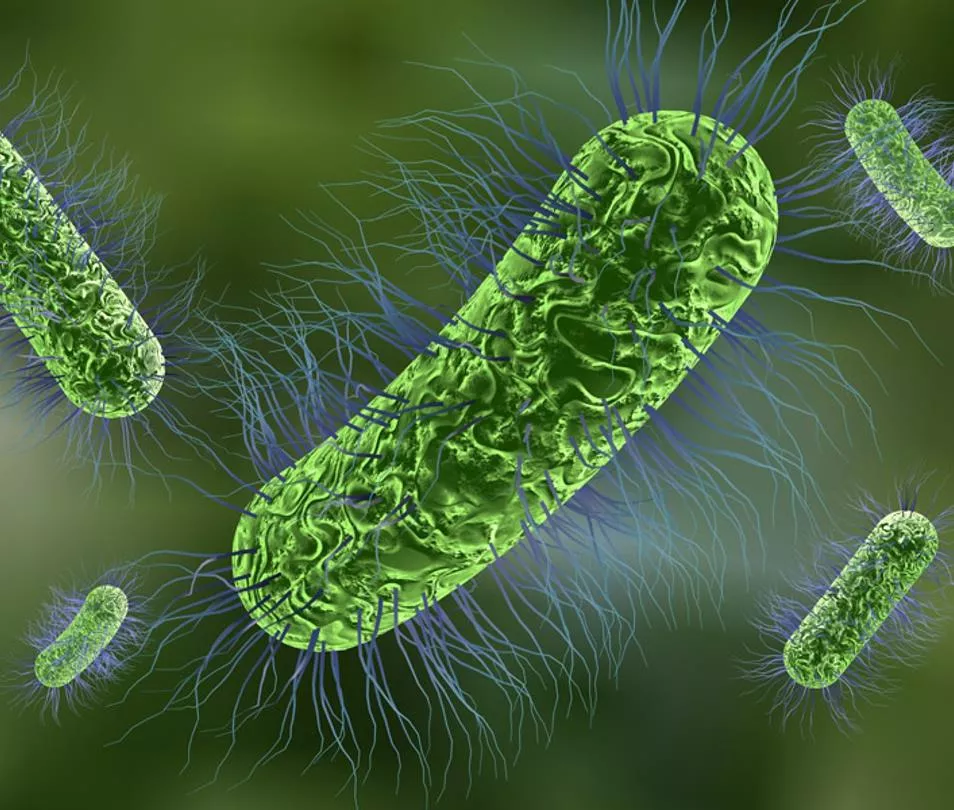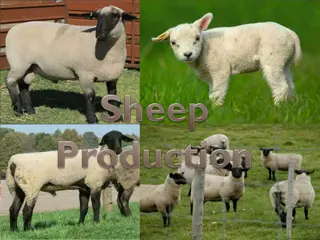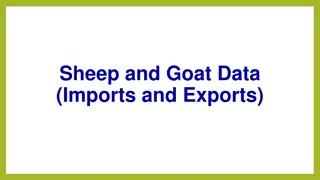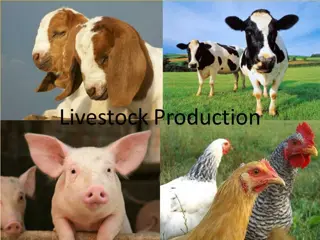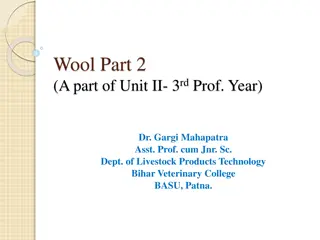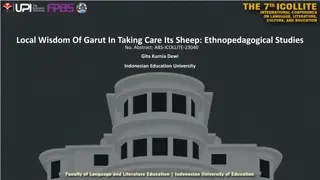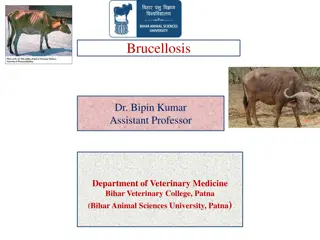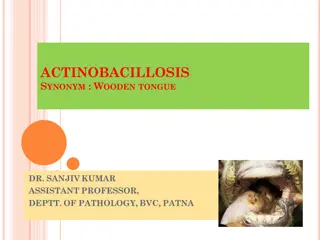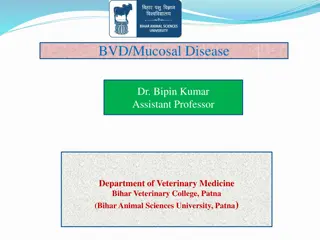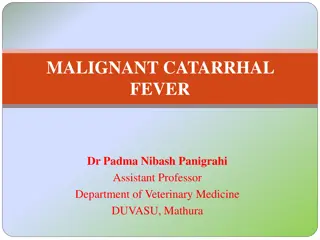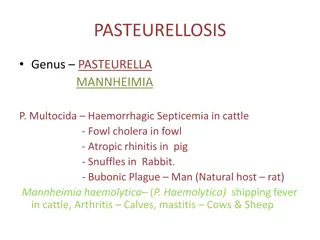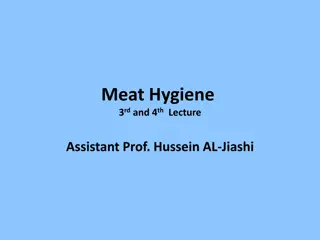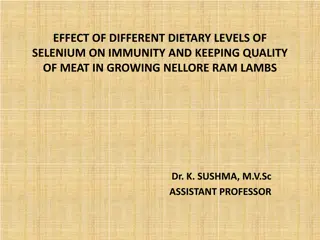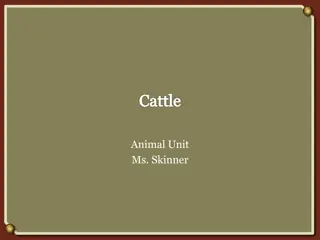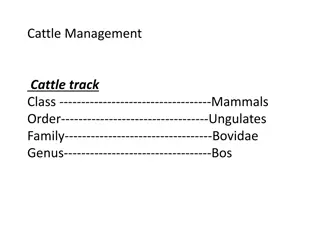Blackleg Disease in Cattle and Sheep
Blackleg, caused by Clostridium chauvoei, is an acute disease affecting cattle and sheep globally. This article discusses its etiology, transmission, pathogenesis, clinical findings, and diagnostic confirmation methods.
Download Presentation

Please find below an Image/Link to download the presentation.
The content on the website is provided AS IS for your information and personal use only. It may not be sold, licensed, or shared on other websites without obtaining consent from the author.If you encounter any issues during the download, it is possible that the publisher has removed the file from their server.
You are allowed to download the files provided on this website for personal or commercial use, subject to the condition that they are used lawfully. All files are the property of their respective owners.
The content on the website is provided AS IS for your information and personal use only. It may not be sold, licensed, or shared on other websites without obtaining consent from the author.
E N D
Presentation Transcript
BLACK LEG By Dr. Hussein Al Naji
ETIOLOGY This Photo by Unknown Author is licensed under CC BY-NC-ND Blackleg, or clostridial myositis of skeletal and/or heart muscle tissue, is associated with Clostridium chauvoei (feseri), a gram positive, spore-forming, rod-shaped bacterium. The spores are normally found in soil. Blackleg is an acute febrile disease primarily affecting cattle and sheep, with worldwide occurrence. 20XX Presentation title 2
Transmission 1. In cattle the disease usually occurs without a history of trauma 2. In sheep, skin wounds from shearing, docking, fighting and vulvar or vaginal lacerations from parturition or the fresh navel at birth are the most common routes through which C. chauvoei penetrates and infects muscle tissue to cause clinical disease. 3. Occasional out breaks have occurred in sheep after vaccination against enterotoxemia. 3
Pathogenesis In sheep the disease related to tissue laceration and trauma, the stimulus growth of the latent bacterial spores but in cattle is unknown. Spores of C. chauvoei have been found normally in the soil, digestive tract, spleen and liver healthy animals C. chauvoei produces a number of toxins, such as 1- oxygen-stable cause myositis locally in skeletal muscles and toxemia that is usually fatal. severe necrotizing 2-oxygen-labile a systemic 3-hemolysins,DNase, 4-hyaluronidase, 5-neuramidase,. 20XX Presentation title 4
In cattle 1. In the early stages, the swelling is hot and painful to the touch but soon becomes cold and painless, and edema and emphysema can CLINICAL FINDING be felt. 2. The skin is discolored and soon becomes dry and cracked. 3. The animal will be found to be very depressed, have complete anorexia and ruminal stasis, and have a high temperature (41 C). The animal is observed before death there is severe lameness, usually with pronounced swelling of the upper part of the affected leg. 20XX Presentation title 5
CLINICAL FINDING In Sheep 1. A stiff gait, and the sheep is disinclined to move because of severe lameness in one limb or, more commonly, in several limbs. The lameness may be severe enough to prevent walking. 20XX Presentation title 6
1. Culture from needle biopsy. 2. No diagnostic change in hematology or serum biochemistry. Clinical pathology Necropsy findings Myositis; dark, rancid odor, metallic sheen on the cut surface. Diagnostic confirmation 1. Fluorescent antibody identification of C. chauvoei in lesion. 2. PCR 20XX Presentation title 7
DIFFERENTIAL DIAGNOSIS TREATMENT AND CONTROL 1- Malignant edema 2- Anthrax 1. Treatment Penicillin G sodium/potassium 3- Lightning strike (44,000 IU/kg IV q6 8h). 4- Bacillary hemoglobinuria 2. Clostridium chauvoei antitoxin (only in early 4- Other causes of sudden stages, but doubtful efficacy) unexpected death Control 1- Multivalent clostridial vaccine including at least C. chauvoei, C. septicum, and C. novyi (R-2) 2- Penicillin (44,000 IU/kg IM q24 for 3 days for animals at risk) (R-2) 20XX Presentation title 8
Thank you 20XX Presentation title 9









